Asian or Asiatic jasmine, Trachelospermum asiaticum, is a somewhat aggressive ground cover that utterly disregards the well-considered edgings you carefully construct to contain it.
Its greatest feature – the ability to quickly cover a patch of bare earth where nothing else will grow – is also its greatest liability, for it grows and grows and grows, and before you know it, it’s taken over half your lawn and is steadily marching toward the neighbor’s.

We link to vendors to help you find relevant products. If you buy from one of our links, we may earn a commission.
But there’s no need to sound the alarm. While it may take a bit of effort, it’s easy enough to control Asian jasmine plants.
What You’ll Learn
4 Tips for Keeping Asiatic Jasmine in Check
The best advice we can offer is to keep a close eye on your vines. I know this can get tricky, what with life getting in the way and all.
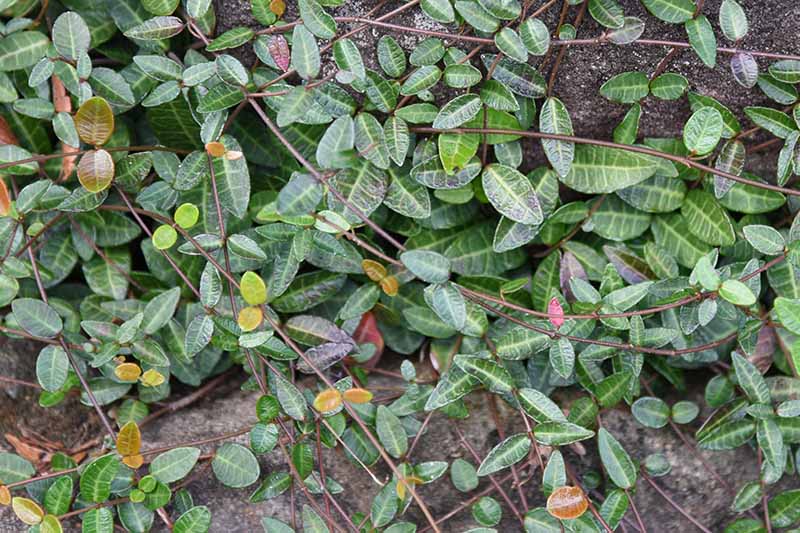
But try to make a point to get out there, especially during the spring growing season, and monitor the progress of your Asian jasmine as it makes its bold advance across the garden.
Stay on top of it, and your job will be easier.
Here are our top 4 recommended methods for trimming back the inevitable strays:
1. Hand Trim Stray Vines
One option for keeping Asian jasmine runners in check is to simply cut off undesired lengths with hand pruners.
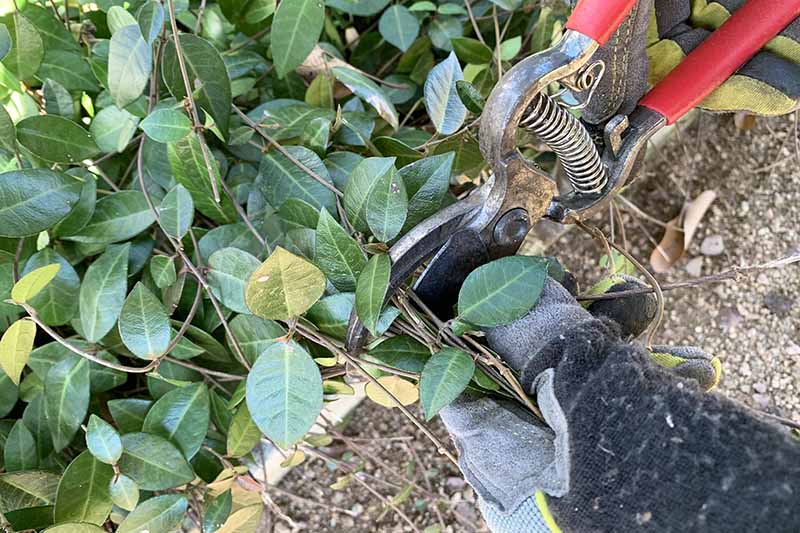
I often grab a handful of the offending vines and trim several at a time.
This fine-tuned trimming enables you to make more precise cutting choices.
You could also use hedge shears for bigger trimming jobs.
2. Get Out the String Trimmer
If you have a large area that needs work, consider using a string trimmer. You can trim the edge of the “patch” or you can skim the trimmer over the top of the vines.

At one house we lived in, we had a huge area of Asian jasmine.
My husband would string trim across the top of the whole thing about once a year, to keep the mass from getting too tall, and then a couple of times a year, he’d “edge” the vine to keep it from growing over the driveway.
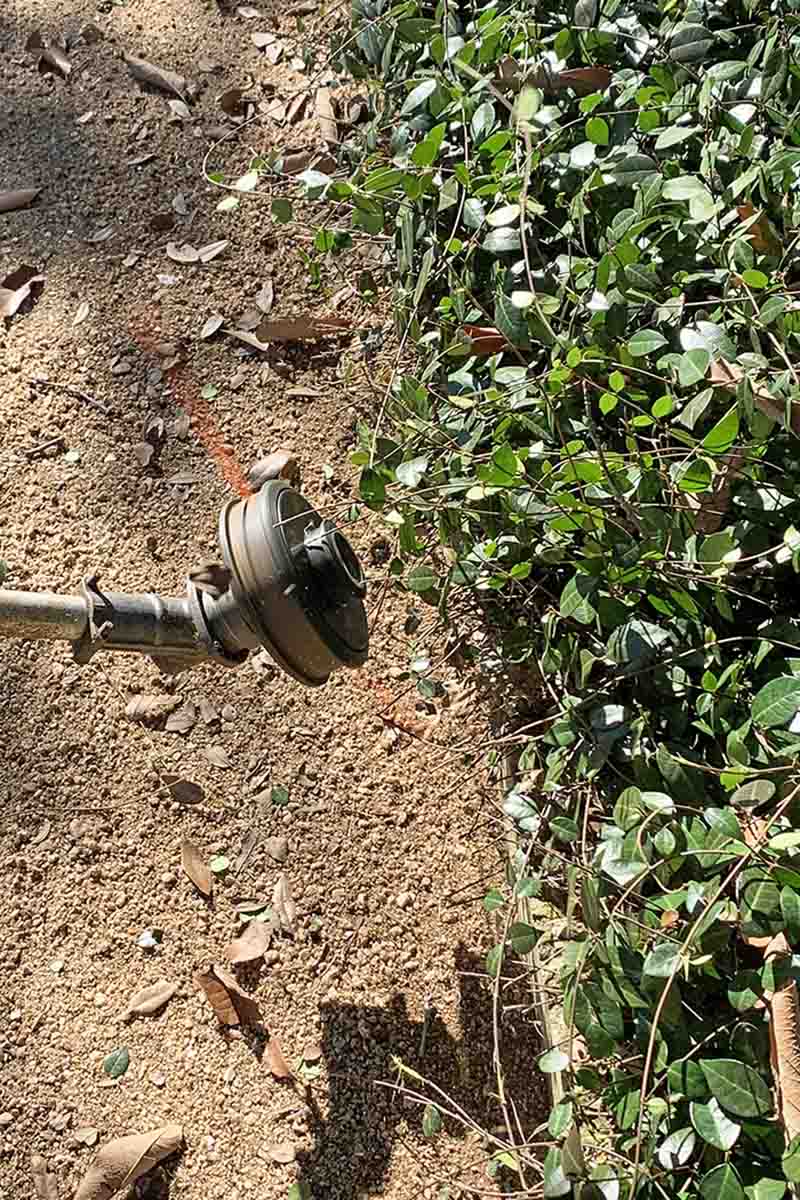
We don’t like the hard, very vertical hedge edge that can sometimes result from this kind of trimming, so he works some kinda magic with the trimmer to allow some bits to spill just a couple inches over the edging material, giving it a softer edge.
3. Use a Mower
Some gardeners periodically – typically every three years or so – mow their patches of Asian jasmine, particularly if it’s gotten extraordinarily thick and there are a lot of leafless woody bits under the top canopy.
The best time to do a mow is in late winter, just before the plants begin their spring growth spurt.
Set your mower on the highest setting and have at it. The initial results will not be pretty, but the vines will re-leaf in a few short weeks and your patch will look better than ever.
4. Get the Roots Out
If you wish to remove an entire section of Asiatic jasmine, to truly get rid of it, you’ll want to scalp the area with your mower and then carefully and thoroughly dig out all the roots.
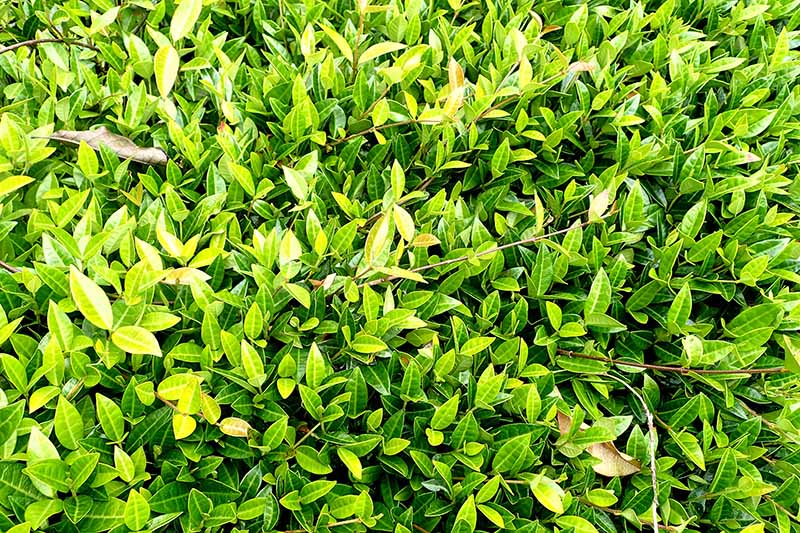
You can use a rototiller to churn up the soil and make the roots more accessible.
It’s essential to collect and discard every bit of plant material, because these plants can root from cuttings. If you don’t get rid of everything, you’ll have new plants popping up.
Post-Pruning Care
After you’ve cut back your Asiatic jasmine, water it well to help it recover from the shock of the trims. Add one inch of water per week for four weeks.
When It’s Time to Say Goodbye
While Asian jasmine is a useful plant to fill in areas of the garden where other plants won’t grow, or where you simply want a swath of attractive groundcover, it can indeed be a bit aggressive.

If you find it needs a haircut, you have several options to either remove bulk or prevent creepage.
Do you have Asiatic jasmine? What are your secrets for keeping it in check? Share in the comments section.
If you’re new to Asiatic jasmine and want to learn more, check out our full growing guide.
Do you have other pruning chores on the horizon? You’ll need these articles for guidance:
Photos by Gretchen Heber © Ask the Experts, LLC. ALL RIGHTS RESERVED. See our TOS for more details. Uncredited photos: Shutterstock.
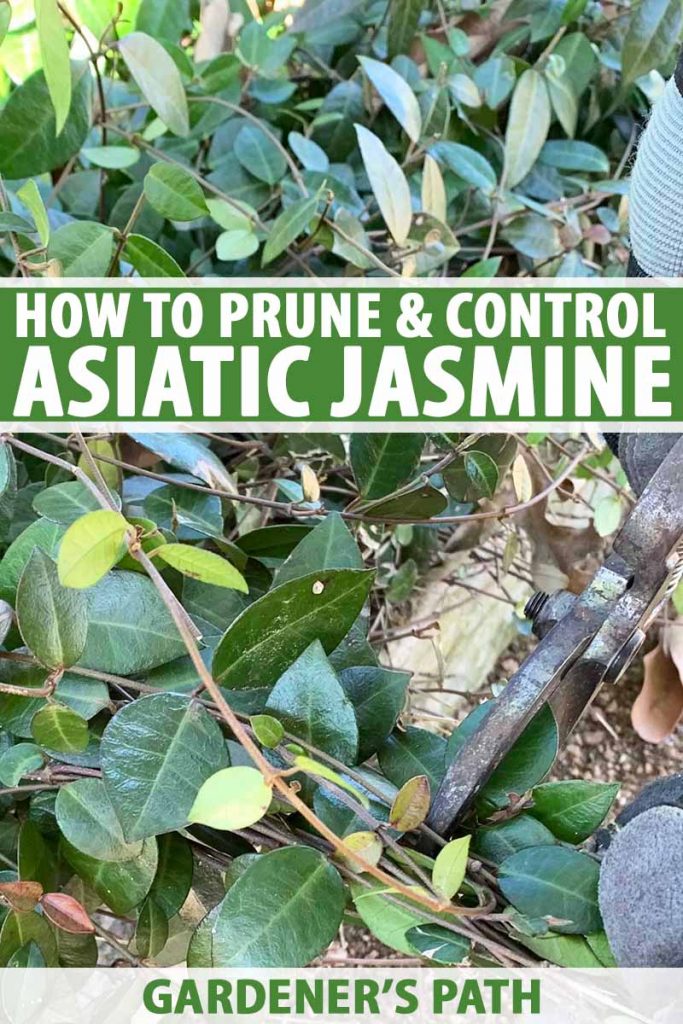
Thank you! I have a large patch of Jasmine that also now has volunteer plants growing within. I will post before and after photos once completed. this was very helpful. Thanks!
Hello, Tessa Kruyer. Glad to have you as a reader and would still appreciate seeing any photos you have. Happy gardening!
Have a very large area next to the pool where it appears the Asian Jasmine is dead, or close to it. Do I trim to the ground or leave all the dead Jasmine where it is, and wait for the regrowth to take over?
I cut my Asian jasmine I mid April it’s brown now how long will it take to get green
I did the same thing. It looks pretty sad. Did you find out an answer? Is there something else to do to help make it come back?
I just got my first house and the front yard has 2000 sq feet of Star Jasmine completely out of control. I want to get rid of 90% of the stuff.
That’s a lot of stuff.
How do I do this? Do I till it all or do I poison it or what?
Hey Ken, that is a lot of vines! Personally I don’t recommend the use of herbicides because of the toxic impact they leave in the soil, insects, birds, and so on, and there are more earth-friendly solutions. A good option is to mow the vines with a lawn mower or weed trimmer. You’ll need to repeat this a couple of times until they stop producing new growth, and then you can easily till the soil to remove the roots. Burning the vines is another effective way to destroy them. A weed torch is a good tool for this as it… Read more »
I have a 4×8 flower bed and I like the low easy maintenance aspect of the vine. My vine really doesn’t go into the driveway or the sidewalk. I use the trimmer at times.
These vines are pretty tough! Thanks for sharing your experience Saul.